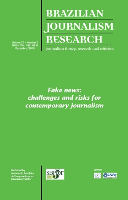
Brazilian Journalism Research
Scope & Guideline
Unveiling Insights into Journalism Practices
Introduction
Aims and Scopes
- Journalism Practices and Innovations:
The journal critically examines various forms of journalism, including investigative, literary, and immersive journalism, focusing on how these practices evolve in response to technological advancements and societal changes. - Media and Political Dynamics:
It explores the relationship between media and politics, particularly in contexts of populism, government influence, and media censorship, providing insights into how journalism shapes and is shaped by political landscapes. - Social Issues and Activism:
The journal highlights the role of journalism in addressing social issues, including environmental activism, gender issues, and human rights, emphasizing the importance of journalism as a tool for social change. - Audience Engagement and Perception:
Research in this area focuses on how audiences interact with news media, including the impact of social media on news consumption and the credibility of information, reflecting the evolving nature of audience-journalist relationships. - Cultural Context and Comparative Studies:
It investigates journalism within cultural contexts, often comparing practices across different countries or regions, thus contributing to a broader understanding of global journalism trends.
Trending and Emerging
- Immersive and Experiential Journalism:
There is a growing interest in immersive journalism practices, including virtual and augmented reality, which are reshaping how stories are told and experienced by audiences. - Journalism and Activism:
Research is increasingly focusing on the intersection of journalism and activism, particularly in relation to environmental issues and social justice, highlighting journalism's role in advocacy. - Impact of Social Media on Journalism:
Studies examining the influence of social media on news dissemination, audience engagement, and the credibility of information are on the rise, reflecting the platform's significant role in modern journalism. - Populism and Journalism:
The relationship between populism and journalism has become a prominent topic, with researchers analyzing how populist narratives affect journalistic practices and media coverage. - Data Journalism and Analytics:
An increased emphasis on data journalism and the use of analytics in news reporting is emerging, as journalists seek to leverage data for more informed storytelling and audience engagement.
Declining or Waning
- Traditional Journalism Models:
There is a noticeable reduction in studies focusing solely on traditional journalism practices, as the field increasingly shifts towards exploring innovative and digital formats. - Economic Journalism Coverage:
Research specifically centered on economic journalism has become less frequent, perhaps due to a broader focus on social and political issues that resonate more with current global challenges. - Local and Regional Journalism Studies:
While still important, there appears to be a waning interest in studies solely dedicated to local and regional journalism, as researchers increasingly address broader national and international themes. - Journalistic Ethics in Established Media:
Discussions around ethics in traditional media outlets have decreased in favor of emerging ethical challenges posed by new media and citizen journalism. - Censorship Studies in Stable Democracies:
The focus on censorship within stable democratic contexts has diminished, reflecting a shift towards more pressing issues related to authoritarian regimes and their impacts on journalism.
Similar Journals

Theoretical and Practical Issues of Journalism
Navigating the Evolving Landscape of News and MediaTheoretical and Practical Issues of Journalism is a prestigious journal published by Baikal State University, that explores a broad spectrum of topics within the field of journalism. With an ISSN of 2308-6203 and an E-ISSN of 2308-6211, this journal commits to advancing the discourse in both theoretical frameworks and applied methodologies that shape contemporary journalism practices. Although it operates under an open-access model, aiming to enhance accessibility for researchers, professionals, and students worldwide, the journal does not currently display an H-index, reflecting an exciting opportunity for early career researchers to contribute to building its impact. Situated in Irkutsk, Russia, the journal serves as a vital platform for the dissemination of innovative research and critical analysis, aimed at addressing the evolving challenges in journalism today. Its scope encompasses interdisciplinary studies, media ethics, digital journalism, and the socio-political dynamics impacting the news landscape, making it an invaluable resource for anyone vested in the field. As the media environment thrives amidst rapid technological changes, Theoretical and Practical Issues of Journalism remains essential for fostering dialogue and encouraging scholarly efforts that respond to these shifts.

Central European Journal of Communication
Shaping the Future of Communication Research and DiscourseCentral European Journal of Communication, published by the Polish Communication Association, is a pivotal resource in the field of communication studies. Since its inception, this journal has become a significant platform for scholarly discourse, contributing valuable research and insights that span the diverse landscape of communication. With its current classification in the Q3 quartile of the communication category and a ranking of #315 out of 511 in Scopus, it is positioned to foster growth in communication research and practice within Central Europe and beyond. The journal invites submissions that explore a wide array of topics pertinent to communication, ensuring a robust dialogue among researchers, professionals, and students alike. Although currently operating under traditional access formats, the journal aims to enhance visibility and engagement by prioritizing quality content that addresses contemporary issues in communication, making it an essential resource for those looking to deepen their understanding of this dynamic field.
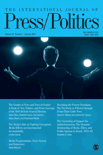
International Journal of Press-Politics
Pioneering Studies that Define the Future of Media and PoliticsThe International Journal of Press-Politics, published by SAGE Publications Inc, stands as a premier scholarly platform at the intersection of communication, sociology, and political science. With a distinguished history dating back to its inception in 2003 and maintaining its relevance through 2024, this journal is recognized in the academic community for its rigorous exploration of the dynamics between the media and political processes. The journal proudly holds a Q1 ranking in both Communication and Sociology and Political Science categories, placing it in the top tier of its field, underscored by its impressive Scopus rankings, which reflect its global influence and reach. With an intention to foster innovative research and discourse, IJPP is committed to being accessible, contributing significantly to the understanding of how press and politics shape societal narratives, thus serving as an essential resource for researchers, professionals, and students alike. Explore this esteemed journal to engage with cutting-edge studies that drive the field forward.

Pacific Journalism Review
Empowering Pacific Perspectives in Communication Studies.The Pacific Journalism Review, published by the Auckland University of Technology’s Creative Industries Research Institute, stands as a pivotal platform for scholarly discourse in the field of journalism and communication, particularly within the Pacific region. With an ISSN of 1023-9499 and an E-ISSN of 2324-2035, this journal has embraced Open Access since 2016, thereby enhancing accessibility and dissemination of research findings. Located in Auckland, New Zealand, it has been a critical outlet for innovative research and analysis from 2005, converging onto the contemporary landscapes of media practices through 2024. Featuring a 2023 Scopus ranking of #211 in the field of Communication, placing it in the 58th percentile, this journal is recognized for its significant contributions to the academic community, evident from its classification in the Q3 quartile. Aimed at researchers, professionals, and students alike, the Pacific Journalism Review not only enriches the discourse in communication studies but also shapes the future narratives of journalism in the Pacific and beyond.
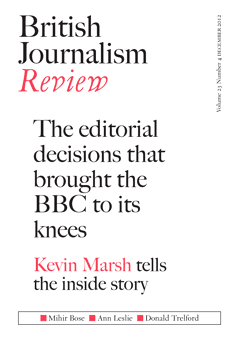
British Journalism Review
Analyzing Trends in the World of News MediaBritish Journalism Review is a distinguished academic journal dedicated to the exploration and analysis of the rapidly evolving field of journalism. Published by SAGE Publications Ltd, this journal plays a critical role in disseminating high-quality research that addresses key issues facing journalists and media organizations today. With an ISSN of 0956-4748 and an E-ISSN of 1741-2668, it is a pivotal resource for scholars, practitioners, and students alike. Although the journal does not currently offer Open Access options, it maintains a strong commitment to academic rigor and innovation in journalism studies. By engaging with a diverse range of topics such as media ethics, the impact of digital technologies, and the changing landscape of news consumption, the British Journalism Review remains instrumental in shaping contemporary debates and enhancing the scholarly discourse in its field.
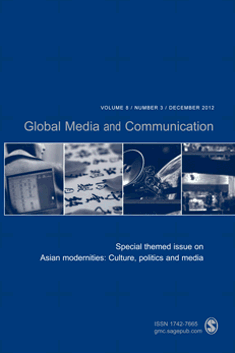
Global Media and Communication
Pioneering Scholarly Discourse in Global Media StudiesGlobal Media and Communication is a premier journal dedicated to advancing the fields of media and communication studies, published by SAGE Publications Ltd. With an ISSN of 1742-7665 and an E-ISSN of 1742-7673, this journal offers a platform for scholarly discourse and innovative research that explores the intricate relationships between global media practices and communication strategies. Recognized as a Q1 journal in both the Arts and Humanities (Miscellaneous) and Communication categories for 2023, it stands out in its commitment to delivering high-quality, peer-reviewed articles that contribute to the understanding of contemporary media landscapes. Located in London, United Kingdom, the journal benefits from being at the heart of cultural and digital innovation. Researchers, professionals, and students can look forward to insightful articles that not only critique existing frameworks but also propose new methodologies, ensuring that Global Media and Communication remains a vital resource for anyone interested in navigating the evolving dynamics of media and communication on a global scale.
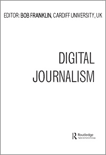
Digital Journalism
Exploring Innovations at the Intersection of Technology and JournalismDigital Journalism is an esteemed academic journal dedicated to advancing the interdisciplinary field of digital communication and journalism. Published by Routledge Journals, Taylor & Francis Ltd, this journal has established itself as a leading resource with a noteworthy Q1 rank in Communication for 2023, placing it among the top tier of journals in this dynamic field. With its ISSN 2167-0811 and E-ISSN 2167-082X, it serves as a pivotal platform for researchers, professionals, and students interested in exploring the intersection of technology and journalism, publishing insightful studies that address contemporary challenges and innovations. The journal has been continually evolving since its inception in 2013 and is set to extend its reach until 2024, consistently attracting high-quality scholarly contributions. With a distinguished rank of 11 out of 511 in Scopus's Social Sciences - Communication category, and boasting an impressive 97th percentile, Digital Journalism is an essential read for anyone keen on understanding the future of news in the digital era.
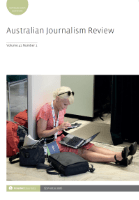
Australian Journalism Review
Transforming Understanding of Journalism's Role in SocietyAustralian Journalism Review, published by INTELLECT LTD, is a leading academic journal that focuses on the dynamic field of journalism and communication. With the ISSN 0810-2686 and E-ISSN 2517-620X, this journal has established itself as a significant contributor to understanding contemporary journalism in Australia and beyond. It boasts a respectable Q2 ranking in the Communication category for 2023, positioning it among the top journals in its field, with a Scopus rank of #273 out of 511 in Social Sciences Communication, reflecting its growing impact within academic and professional circles. The journal’s scope includes critical analyses of journalism practices, media policy, and the evolving roles of journalists in society, making it an essential resource for researchers, professionals, and students interested in the intersection of media, ethics, and culture. Although it does not currently offer open access, interested audiences can find valuable insights from its converged issues, spanning from 2003 to 2024, allowing for a comprehensive view of the progression and transformation of journalism studies.
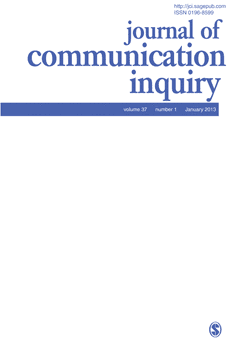
Journal of Communication Inquiry
Fostering Innovative Research in Communication and Cultural InquiryJournal of Communication Inquiry, published by SAGE PUBLICATIONS INC, is a premier interdisciplinary journal that serves as a vital platform for scholars and practitioners in the fields of communication, cultural studies, and the arts and humanities. With a rich history dating back to its inception in 1974, the journal has consistently upheld rigorous academic standards, reflected in its impressive rankings within the Q1 and Q2 quartiles across various disciplines according to the latest metrics. The journal's comprehensive scope encompasses theoretical and empirical research, catering to a diverse readership who are keen to explore contemporary communication issues and cultural dynamics. While the impact factor is not explicitly stated, the journal's Scopus ranks position it favorably within its categories, with notable percentiles that highlight its influence in the academic community. As an essential resource for researchers, professionals, and students alike, the Journal of Communication Inquiry invites contributions that advance the discourse surrounding communication practices and cultural phenomena, contributing to the ongoing dialogue in these evolving fields.

Doxa Comunicacion
Exploring the forefront of communication research.Doxa Comunicación is a prominent open-access journal dedicated to advancing the field of communication studies, published by Universidad San Pablo CEU, under the Faculty of Humanities and Communication Sciences. Established in 2003, this journal has gained recognition for its commitment to disseminating high-quality research and thought-provoking articles, fostering a vibrant academic community. With an ISSN of 1696-019X and an E-ISSN of 2386-3978, Doxa Comunicación occupies a vital niche in the academic landscape of Spain, contributing to both national and international discourses. In the 2023 rankings, it is categorized in the Q3 quartile within the fields of Communication and Social Sciences (miscellaneous), reflecting its competitive standing among peer publications. The journal's diverse scope, including contemporary communication theories and practices, ensures relevance for researchers, professionals, and students alike. With a Scopus rank of #333 in Social Sciences (miscellaneous) and #291 in Communication, Doxa Comunicación serves as an essential platform for innovative research that addresses the complex challenges of modern communication in a rapidly evolving society.